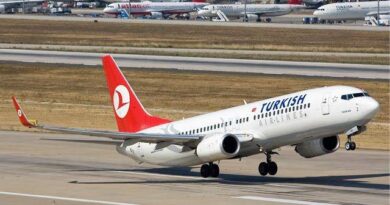The Startle Effect in Aviation: What Pilots Need to Know
The startle effect is a sudden, reflexive reaction to unexpected stimuli, such as alarms or loud noises. This effect temporarily disrupts a pilot’s focus and decision-making, which can be dangerous during critical phases of flight. Managing the startle effect is crucial to maintaining safety.
How Startle Impacts Pilots
When startled, a pilot may experience a momentary lapse in decision-making. This brief period of confusion can escalate an otherwise manageable situation into a crisis. Studies have shown that startled pilots may fail to execute well-practiced procedures, sometimes freezing or overreacting (ERAU Scholarly Commons, Embry-Riddle Aeronautical University).
Common Startle Triggers in the Cockpit
Frequent triggers of the startle effect include system failures, severe weather, and unexpected alarms. Research confirms that sudden, unexpected events like these increase stress levels, affecting pilots’ physiological and cognitive functions (ERAU Scholarly Commons, STARS).
How Training Reduces the Startle Effect
Training programs are essential to reducing the risks of the startle effect. Scenario-based training helps pilots prepare for sudden emergencies, allowing them to practice controlling their reactions in simulated environments. By regularly exposing pilots to high-stress situations, they can build the mental resilience necessary to handle real-world events (STARS, ERAU Scholarly Commons).

Threat and Error Management (TEM)
Another strategy to combat the startle effect is Threat and Error Management (TEM). This proactive approach encourages pilots to identify and prepare for potential threats before they occur, helping them react calmly during unexpected situations (Embry-Riddle Aeronautical University, CORE Scholar).
Improving Cockpit Design to Reduce Startle
Modern cockpit design also plays a role in reducing the startle effect. Simplifying cockpit layouts, streamlining alerts, and improving automation help pilots maintain control during emergencies. Research supports the idea that better-designed cockpits can minimize confusion and stress .
Conclusion: Preparing for the Unexpected
Mitigating the startle effect involves comprehensive training and enhanced cockpit design. By understanding and preparing for this response, pilots can significantly reduce its impact on flight safety. Through continuous practice and improved safety protocols, the aviation industry aims to reduce accidents caused by startle-induced errors (STARS, ERAU Scholarly Commons).
References and Further Reading:
- Civil Aviation Authority (CAA). (2018). Startle and surprise: An introduction. Retrieved from https://publicapps.caa.co.uk/docs/33/StartleandSurprise.pdf
- Federal Aviation Administration (FAA). (2015). Startle and surprise in aviation. Retrieved from https://www.faa.gov/news/safety_briefing/2015/media/MayJun2015.pdf
- Reason, J. (1990). Human Error. Cambridge University Press.
- Shappell, S. A., & Wiegmann, D. A. (2001). The human factors analysis and classification system (HFACS). In Proceedings of the 11th International Symposium on Aviation Psychology (pp. 9-14).


